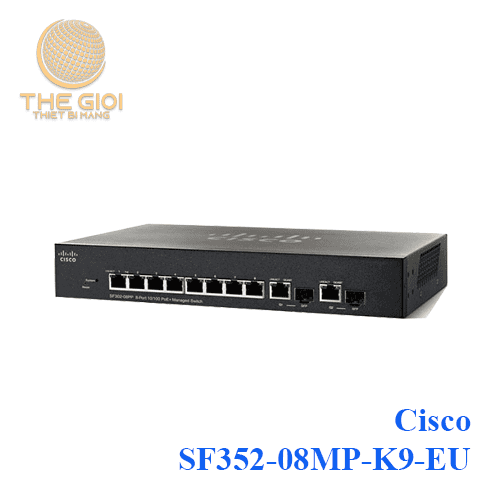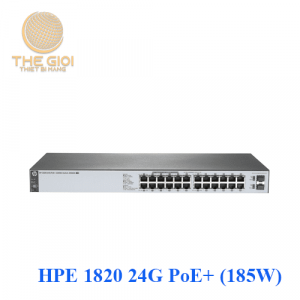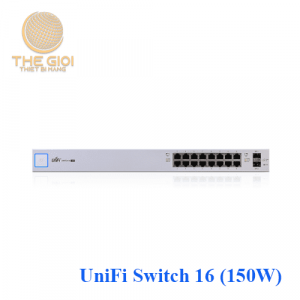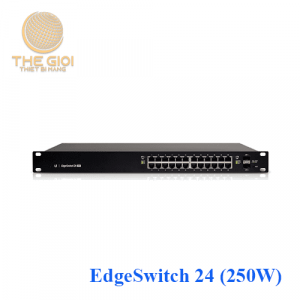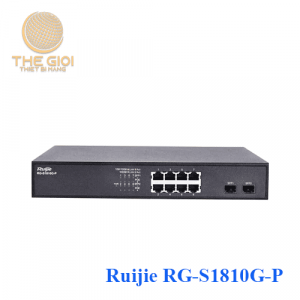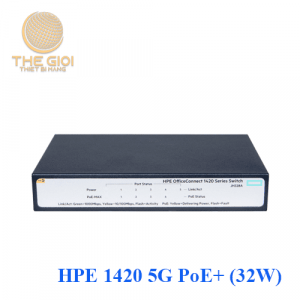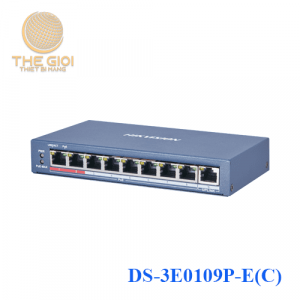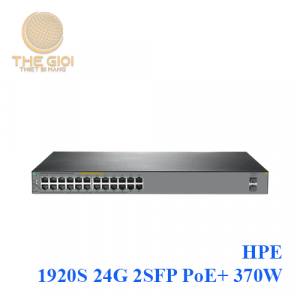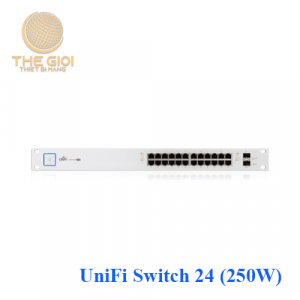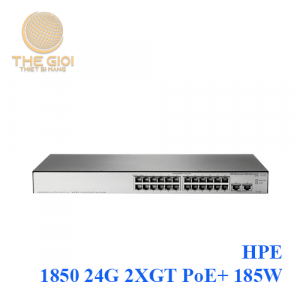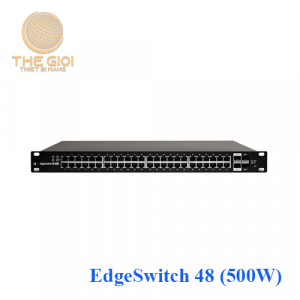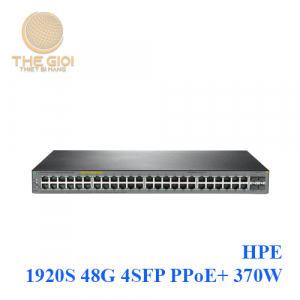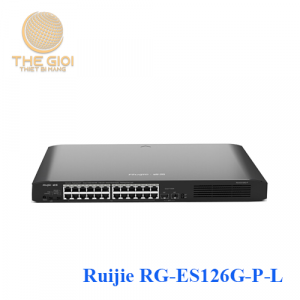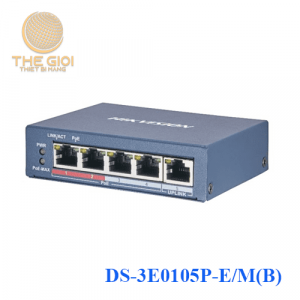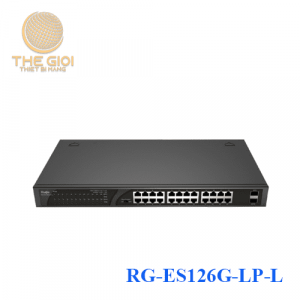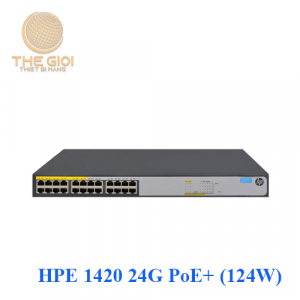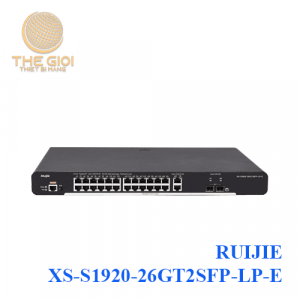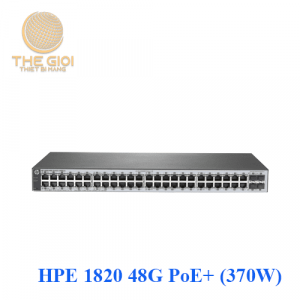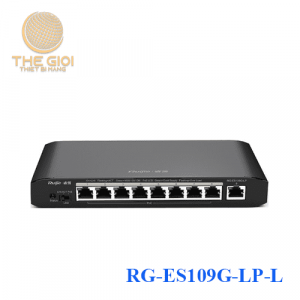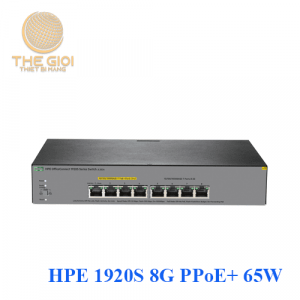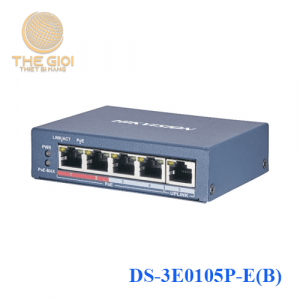Cisco SF352-08MP-K9-EU 8-port 10/100 Max-POE Managed Switch
Bộ chuyển mạch Switch Cisco SF352-08MP-K9-EU được thiết kế tối giản đúng như mục đích sử dụng nó với 8 Port RJ45 tốc độ 10/100Mbps. Là loại Switch quản lý cho doanh nghiệp nhỏ SF352-08MP-K9-EU nổi bật với khả năng tự động chuyển chế độ cáp thẳng (MDI/MDI-X) cùng với đó các tính năng địa chỉ học tập và kiểm soát lưu lượng dữ liệu giúp cho việc truyền tải dữ liệu được tối ưu hơn.
Bộ chuyển mạch Switch Cisco SF352-08MP-K9-EU dòng thiết bị chuyển mạch Switch 350 Series chuyên dụng, sản phẩm là giải pháp tối ưu cho các doanh nghiệp nhỏ (Cisco Small Bussiness 350 Series).
Không chỉ vậy, ngoài ra Switch SF352-08MP-K9-EU còn tạo ra sự khác biệt khi mà thiết bị này được thiết kế để có thể phù hợp với cả 3 lớp mạng và kèm theo là khả năng cung cấp nguồn PoE tích hợp luôn trên các cổng mạng của thiết bị.
Tính năng nổi bật của Switch Cisco SF352-08-K9-EU
Hỗ trợ chuẩn Spanning Tree 802.1d
Hội tụ nhanh bằng cách sử dụng 802.1w (Cây Spanning nhanh [RSTP]), được bật theo mặc định
Hỗ trợ giao thức điều khiển tập hợp liên kết IEEE 802.3ad (LACP)
Hỗ trợ lên đến 4096 VLAN cùng một lúc
Private VLAN Edge (PVE), còn được gọi là cổng được bảo vệ, với nhiều đường lên
VLAN minh bạch qua mạng của nhà cung cấp dịch vụ trong khi cô lập lưu lượng truy cập giữa các khách hàng với tính năng Q-in-Q VLAN
Chuyển tiếp lưu lượng DHCP đến máy chủ DHCP trong VLAN khác nhau; làm việc với DHCP Option 82
IGMP querier được sử dụng để hỗ trợ một tên miền multicast lớp 2 của các thiết bị chuyển mạch snooping trong trường hợp không có bộ định tuyến multicast
Định tuyến Wirespeed của gói IPv4, lên tới 1K tuyến tĩnh và lên tới 128 giao diện IP
Cấu hình giao diện lớp 3 trên cổng vật lý, giao diện LAG, VLAN hoặc giao diện loopback
Chuyển tiếp lưu lượng DHCP trên các miền IP
Hỗ trợ SSL: Mã hóa tất cả lưu lượng HTTPS, cho phép truy cập bảo mật cao vào GUI quản lý dựa trên trình duyệt trong chuyển đổi là một trong những tính năng không thể bỏ qua
Thông số kỹ thuật Switch Cisco SF352-08-K9-EU
| Model | SF352-08MP-K9-EU |
| Port | |
| Total System Ports | 8 Fast Ethernet + 2 Gigabit Ethernet |
| RJ-45 Ports | 8 Fast Ethernet |
| Combo Ports (RJ‑45 + SFP) | 2 Gigabit Ethernet combo |
| Performance | |
| Switching capacity and forwarding rate | Capacity in Millions of Packets per Second (mpps) (64-byte packets): 4.17 |
| All switches are wire speed and nonblocking | Switching Capacity in Gigabits per Second (Gbps): 5.6 |
| USB slot | For file-management purposes |
| Layer 2 Switching | |
| Spanning Tree Protocol | Standard 802.1d Spanning Tree support Fast convergence using 802.1w (Rapid Spanning Tree [RSTP]), enabled by default 8 instances are supported Multiple Spanning Tree instances using 802.1s (MSTP) |
| Port grouping | Support for IEEE 802.3ad Link Aggregation Control Protocol (LACP): Up to 8 groups, Up to 8 ports per group with 16 candidate ports for each (dynamic) 802.3ad link aggregation |
| VLAN | Support for up to 4096 VLANs simultaneously Port-based and 802.1Q tag-based VLANs MAC-based VLAN Management VLAN Private VLAN Edge (PVE), also known as protected ports, with multiple uplinks Guest VLAN Unauthenticated VLAN Dynamic VLAN assignment via RADIUS server along with 802.1x client authentication CPE VLAN |
| Voice VLAN | Voice traffic is automatically assigned to a voice-specific VLAN and treated with appropriate levels of QoS Auto voice capabilities deliver networkwide zero-touch deployment of voice endpoints and call control devices |
| Multicast TV VLAN | Multicast TV VLAN allows the single multicast VLAN to be shared in the network while subscribers remain in separate VLANs (also known as MVR) |
| Q-in-Q VLAN | VLANs transparently cross a service provider network while isolating traffic among customers |
| Generic VLAN Registration Protocol (GVRP)/Generic Attribute Registration Protocol (GARP) | Protocols for automatically propagating and configuring VLANs in a bridged domain |
| Unidirectional Link Detection (UDLD) | UDLD monitors physical connection to detect unidirectional links caused by incorrect wiring or cable/port faults to prevent forwarding loops and blackholing of traffic in switched networks |
| Dynamic Host Configuration Protocol (DHCP) Relay at Layer 2 | Relay of DHCP traffic to DHCP server in different VLAN; works with DHCP Option 82 |
| Internet Group Management Protocol (IGMP) versions 1, 2, and 3 snooping | IGMP limits bandwidth-intensive multicast traffic to only the requesters; supports 1K multicast groups (source-specific multicasting is also supported) |
| IGMP Querier | IGMP querier is used to support a Layer 2 multicast domain of snooping switches in the absence of a multicast router |
| Head-Of-Line (HOL) blocking | HOL blocking prevention |
| Loopback Detection | Loopback detection provides protection against loops by transmitting loop protocol packets out of ports on which loop protection has been enabled. It operates independently of STP |
| Jumbo frames | Up to 9K (9216) bytes |
| Layer 3 | |
| IPv4 routing | Wirespeed routing of IPv4 packets Up to 1K static routes and up to 128 IP interfaces |
| IPv6 routing | Wirespeed routing of IPv6 packets |
| Classless Interdomain Routing (CIDR) | Support for CIDR |
| Layer 3 Interface | Configuration of Layer 3 interface on physical port, LAG, VLAN interface, or loopback interface |
| DHCP relay at Layer 3 | Relay of DHCP traffic across IP domains |
| User Datagram Protocol (UDP) relay | Relay of broadcast information across Layer 3 domains for application discovery or relaying of bootP/DHCP packets |
| DHCP Server | Switch functions as an IPv4 DHCP server serving IP addresses for multiple DHCP pools/scopes Support for DHCP options |
| Security | |
| Secure Shell (SSH) Protocol | SSH is a secure replacement for Telnet traffic. SCP also uses SSH. SSH v1 and v2 are supported |
| Secure Sockets Layer (SSL) | SSL support: Encrypts all HTTPS traffic, allowing highly secure access to the browser-based management GUI in the switch |
| IEEE 802.1X (Authenticator role) | 802.1X: RADIUS authentication and accounting, MD5 hash; guest VLAN; unauthenticated VLAN, single/multiple host mode and single/multiple sessions Supports time-based 802.1X Dynamic VLAN assignment |
| Web-based authentication | Web based authentication provides network admission control through web browser to any host devices and operating systems |
| STP Bridge Protocol Data Unit (BPDU) Guard | A security mechanism to protect the network from invalid configurations. A port enabled for BPDU Guard is shut down if a BPDU message is received on that port |
| STP Root Guard | This prevents edge devices not in the network administrator’s control from becoming Spanning Tree Protocol root nodes |
| DHCP snooping | Filters out DHCP messages with unregistered IP addresses and/or from unexpected or untrusted interfaces. This prevents rogue devices from behaving as DHCP Servers |
| IP Source Guard (IPSG) | When IP Source Guard is enabled at a port, the switch filters out IP packets received from the port if the source IP addresses of the packets have not been statically configured or dynamically learned from DHCP snooping. This prevents IP Address Spoofing |
| Dynamic ARP Inspection (DAI) | The switch discards ARP packets from a port if there are no static or dynamic IP/MAC bindings or if there is a discrepancy between the source or destination addresses in the ARP packet. This prevents man-in-the-middle attacks |
| IP/MAC/Port Binding (IPMB) | The preceding features (DHCP Snooping, IP Source Guard, and Dynamic ARP Inspection) work together to prevent DOS attacks in the network, thereby increasing network availability |
| Secure Core Technology (SCT) | Makes sure that the switch will receive and process management and protocol traffic no matter how much traffic is received |
| Secure Sensitive Data (SSD) | A mechanism to manage sensitive data (such as passwords, keys, and so on) securely on the switch, populating this data to other devices, and secure autoconfig. Access to view the sensitive data as plaintext or encrypted is provided according to the user-configured access level and the access method of the user |
| Layer 2 isolation Private VLAN Edge (PVE) with community VLAN | PVE (also known as protected ports) provides Layer 2 isolation between devices in the same VLAN, supports multiple uplinks |
| Port security | The ability to lock source MAC addresses to ports and limits the number of learned MAC addresses |
| RADIUS/TACACS+ | Supports RADIUS and TACACS authentication. Switch functions as a client |
| Storm control | Broadcast, multicast, and unknown unicast |
| RADIUS accounting | The RADIUS accounting functions allow data to be sent at the start and end of services, indicating the amount of resources (such as time, packets, bytes, and so on) used during the session |
| DoS prevention | Denial-Of-Service (DOS) attack prevention |
| ACLs | Support for up to 512 rules Drop or rate limit based on source and destination MAC, VLAN ID or IP address, protocol, port, Differentiated Services Code Point (DSCP)/IP precedence, TCP/UDP source and destination ports, 802.1p priority, Ethernet type, Internet Control Message Protocol (ICMP) packets, IGMP packets, TCP flag, time-based ACLs supported |
| Quality of Service | |
| Priority levels | 8 hardware queues |
| Scheduling | Strict priority and Weighted Round-Robin (WRR) Queue assignment based on DSCP and class of service (802.1p/CoS) |
| Class of service | Port based; 802.1p VLAN priority based; IPv4/v6 IP precedence/Type of Service (ToS)/DSCP based; Differentiated Services (DiffServ); classification and remarking ACLs, trusted QoS |
| Rate limiting | Ingress policer; egress shaping and rate control; per VLAN, per port, and flow based |
| Congestion avoidance | A TCP congestion avoidance algorithm is required to minimize and prevent global TCP loss synchronization |
| Power over Ethernet (PoE) | |
| 802.3af PoE, 802.3at PoE+, and 60W PoE power are delivered over any of the RJ-45 ports within the listed power budgets | Switches support 802.3at PoE+, 802.3af, 60W PoE, and Cisco prestandard (older) PoE. Maximum power of 60W to any 10/100 or Gigabit Ethernet port for PoE+ supported devices and 15.4W for PoE supported devices, until the PoE budget for the switch is reached. The total power available for PoE per switch is as follows: Power Dedicated to PoE: 128W Number of Ports That Support PoE: 8 |
| PoE powered device and PoE passthrough | In addition to AC power, compact switch models can work as PoE powered devices and be powered by PoE switches connected to the uplink ports. The switch can also pass through the power to downstream PoE end devices if required Maximum of 60W can be drawn per uplink port if the peer PoE switch supports 60W PoE. When multiple uplink ports are connected to PoE switches, the power drawn from these ports is combined When AC power is connected and functioning properly, it will have priority over the PoE powered device function. The PoE powered device function will then act as a backup power source to the AC power. The PoE powered device function will be the primary power source for the switch if AC power is not connected |
| Green Power (Mode) | Energy Detect |
| System Power Consumption | 110V=10.4W 220V=11.2W |
| Power Consumption (with PoE) | 110V=157.2W 220V=156.2W |
| Heat Dissipation (BTU/hr) | 536.1 |
| Total System Ports | 8 Fast Ethernet + 2 Gigabit Ethernet |
| RJ-45 Ports | 8 Fast Ethernet |
| Combo Ports (RJ‑45 + SFP) | 2 Gigabit Ethernet combo + 2 SFP |
| Buttons | Reset button |
| Cabling type | Unshielded Twisted Pair (UTP) Category 5 or better for 10BASE-T/100BASE-TX; UTP Category 5 Ethernet or better for 1000BASE-T |
| LEDs | System, Link/Act, PoE, Speed, LED power saving option |
| Flash | 256 MB |
| CPU memory | 512 MB |
| Packet buffer | All numbers are aggregate across all ports as the buffers are dynamically shared: 1.5 Mb |
| Environmental | |
| Dimensions | 279.4 x 44 x 170 mm |
| Weight | 1.16 kg |
| Power | 100-240V 50-60 Hz, 2.0A, external |

